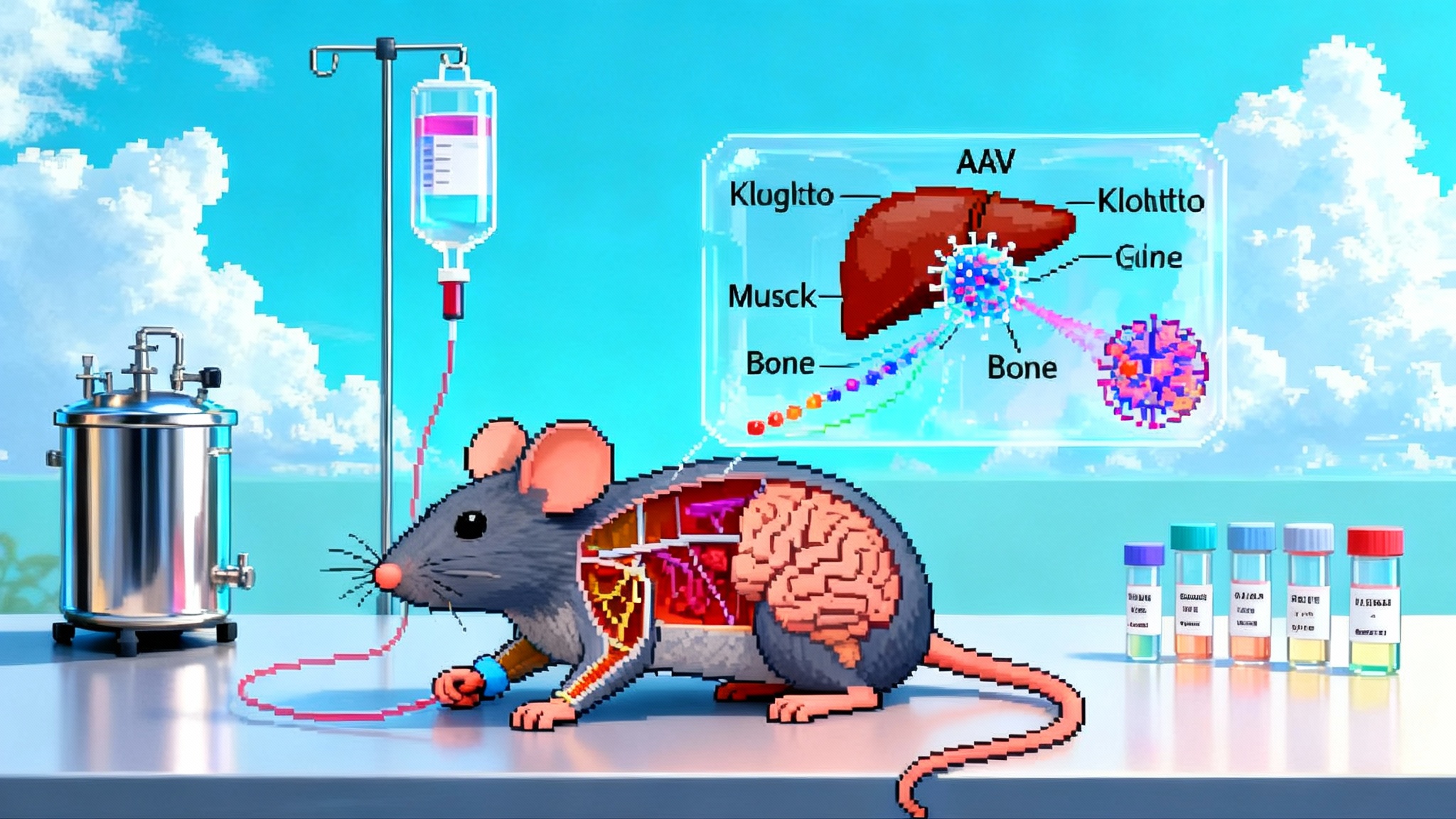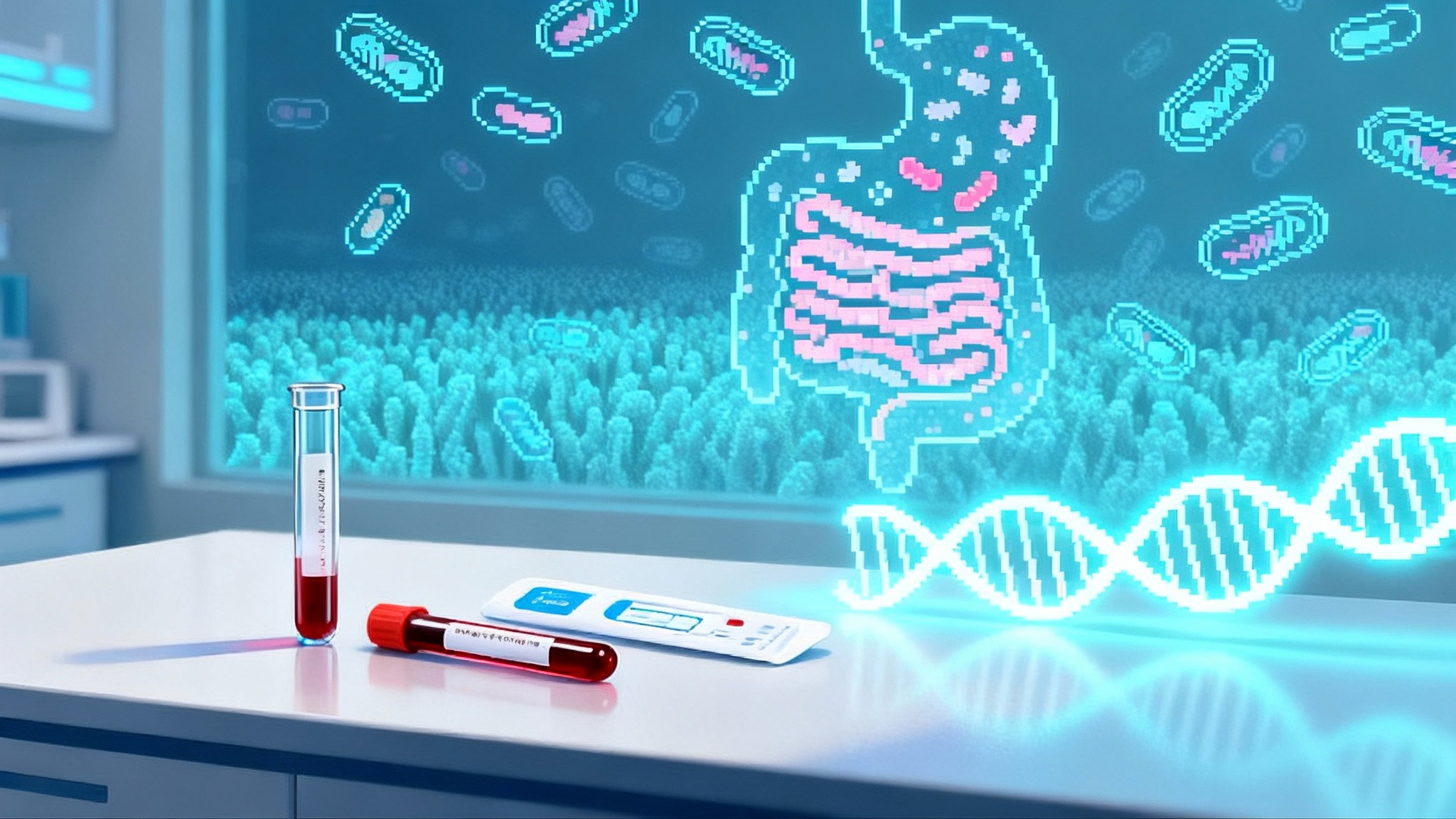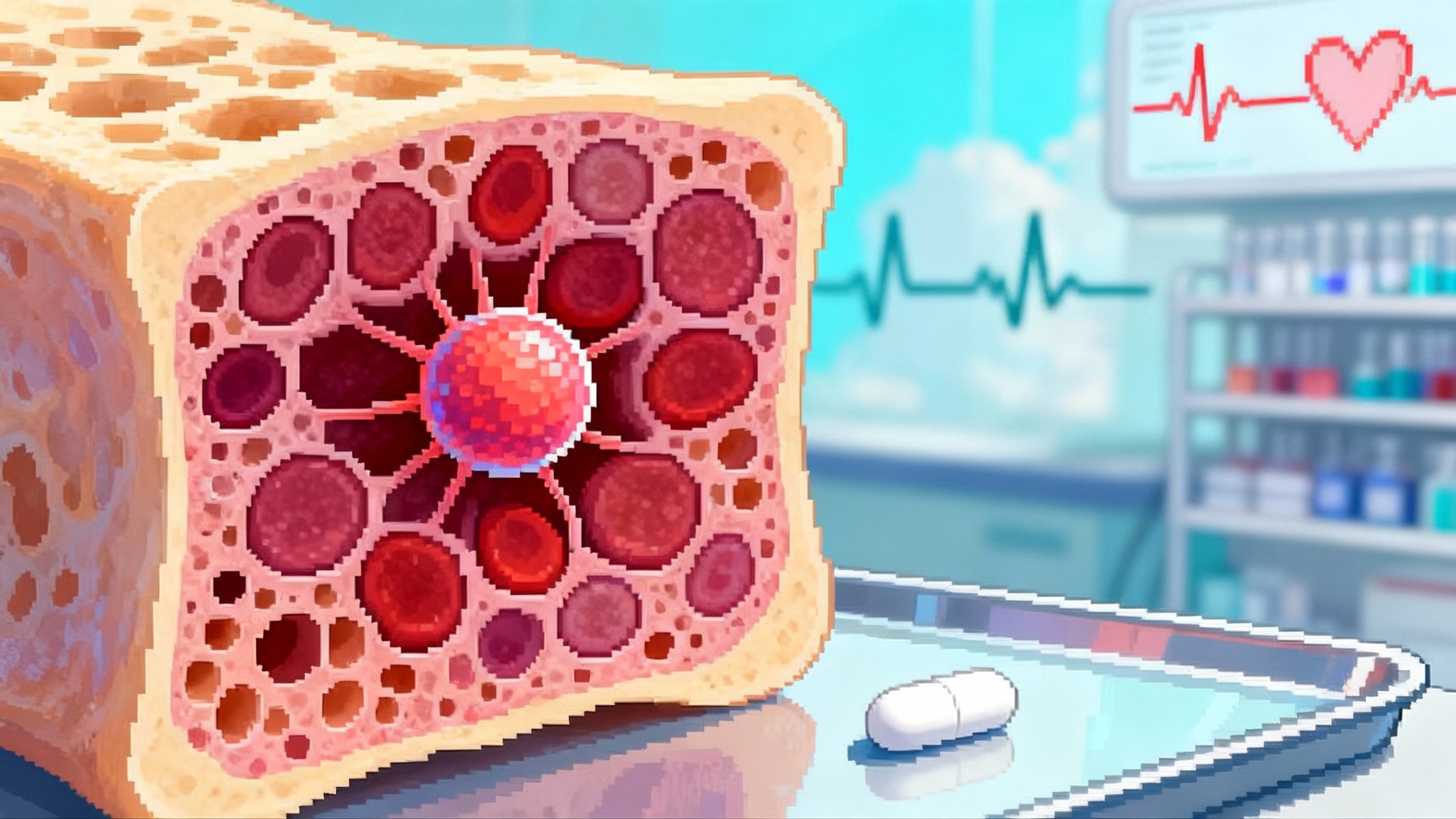Retro Bio’s autophagy Alzheimer’s pill nears first human test
{"value":"Retro Biosciences plans to dose its brain-targeted autophagy inducer, RTR242, in a 2025 first-in-human study in Australia. Here is what the trial will likely test, which biomarkers matter most, and how this approach stacks up against rapalogs and supplements."}

The news, and why it matters
Retro Biosciences says its first small molecule for the brain, dubbed RTR242, is headed for human testing in 2025. In recent interviews, the company said it has selected an Australian site and plans to begin dosing by the end of the year, positioning RTR242 as a first clinical probe of whether restoring cellular cleanup can move the needle in Alzheimer’s disease and, more broadly, brain aging. Those plans were reported with trial details and timing.
The premise is simple to state and hard to do well. As brains age, the cell’s housekeeping system, autophagy, grows sluggish. Proteins and organelles that should be broken down, recycled, or refolded accumulate. Neurons, which do not easily replenish, are especially sensitive to this traffic jam. If a medicine can safely reawaken autophagy inside human neurons, it might restore intracellular balance, lessen toxic buildup, and improve function. That is the bet RTR242 makes.
Autophagy, in plain English
Autophagy is a housecleaning and recycling program inside every cell. It identifies broken parts, wraps them in membranes, fuses them with acidic lysosomes, and deconstructs them into raw materials for reuse. This routine is essential during stress and fasting, and it is one of the few levers that directly addresses loss of proteostasis, a hallmark of aging. In young brains, autophagy turns over synaptic proteins, clears damaged mitochondria, and disposes of misfolded proteins before they clump. With age, autophagic flux often slows, lysosomes become less acidic, and the backlog grows.
In Alzheimer’s, that backlog features familiar culprits like amyloid beta and tau, but it also includes disrupted mitochondria, oxidized lipids, and stalled autophagosomes. Autophagy is not the full story of Alzheimer’s pathology, but it is upstream of many processes that go wrong. That makes it a plausible hallmark-level target: restore the cell’s native cleanup and you might influence several disease pathways at once. For background on blood-based diagnostics that track these processes, see how pTau217 blood tests arrive.
What makes RTR242 different from yesterday’s Alzheimer’s drugs
Most approved Alzheimer’s drugs change neurotransmitter signaling for symptomatic relief or remove extracellular amyloid plaques to slow decline. RTR242 aims to work inside neurons by boosting autophagic flux. If it succeeds, the outcome would not be just fewer plaques. You would expect more subtle but meaningful shifts: lower levels of intracellular toxic species, healthier synaptic turnover, improved neuronal energy balance, and potentially better resilience to inflammatory stress.
Two practical implications follow. First, the earliest readouts are unlikely to be big cognitive wins. They will be biochemical signatures and imaging changes that tell regulators and clinicians the mechanism is engaged. Second, safety is the main determinant in first-in-human testing. Turning up autophagy too far or in the wrong tissues can be counterproductive, so the therapeutic window matters.
The likely shape of the first trial
Phase 1 studies, especially in Australia, typically start in healthy volunteers for safety, tolerability, and pharmacokinetics, then expand into a small patient cohort for exploratory biology. For a brain-targeted autophagy inducer, expect something like this:
- Design: Single and multiple ascending dose cohorts in healthy adults, followed by an Alzheimer’s or mild cognitive impairment cohort at the highest safe exposures.
- PK and brain exposure: Pharmacokinetics with special attention to brain penetration proxies, such as CSF sampling in a patient subset or use of plasma to CSF ratio models if lumbar punctures are not feasible across the board.
- Safety focus: Monitoring across systems most sensitive to autophagy shifts, including immune function, liver, skeletal muscle, and retina.
- Target engagement: Exploratory pharmacodynamics in blood cells, which are easier to sample and can report on autophagy status. Typical markers include LC3-II turnover and p62 or SQSTM1 levels, both at baseline and after short challenges designed to reveal flux.
- Neuro biomarkers: Plasma neurofilament light chain and GFAP as indicators of axonal and astroglial stress, plus sTREM2 for microglial activation. Even directional improvements over weeks can support the case that the drug is acting upstream of neuronal health. For context on evolving regulatory views of lab tests, see the FDA LDT rollback and biomarker validation.
- Digital and functional: Low-burden but sensitive measures, for example smartphone-based cognitive composites and activity or sleep measures that correlate with disease stage.
If initial dosing begins late 2025 and enrollment proceeds smoothly, a healthy volunteer SAD and MAD dataset plus a small patient extension could read out in mid to late 2026. That timeline would set up a Phase 1b or Phase 2a signal-finding study in 2027, a cadence consistent with first-in-class programs in neurodegeneration.
What would count as a win
Longevity companies often talk about adding healthy years, but the path to such claims runs through disease-specific milestones. For an autophagy pill in Alzheimer’s, the earliest validators look like this:
- Exposure and safety: Clear dose exposure relationships, clean tolerability, and brain relevant concentrations.
- Target engagement: Evidence in accessible tissue, ideally with flux-sensitive assays that change in a dose dependent way.
- Biomarker coherence: Directional improvements in a panel of neurodegeneration biomarkers. Large cognitive effects are not required in Phase 1, but biomarker harm must be ruled out and signals should align with improved neuronal health.
- Imaging support: If feasible, signs consistent with restored proteostasis, such as reduced neuroinflammation or better synaptic density in specific regions, though these are ambitious for a first study.
How this compares with rapalogs and spermidine
Rapalogs like rapamycin act upstream by inhibiting mTOR, a master regulator that, among other effects, releases the brakes on autophagy. The upside is breadth. mTOR touches metabolism, immunity, and growth, so benefits may extend beyond the brain. The downside is breadth. Chronic mTOR inhibition can blunt immune responses, affect wound healing, and alter glucose control. Clinically, rapalogs have shown intriguing animal data that include cognition benefits, plus a handful of early human studies and protocols exploring Alzheimer’s endpoints. The field still lacks a definitive placebo controlled trial in patients that links mTOR inhibition to slowed clinical decline while maintaining safety over years.
Spermidine is a dietary polyamine that supports autophagy through acetylation and translational control pathways. It is attractive for safety and over the counter availability in some markets. Human data are mixed. Observational studies suggested cognitive benefits, and small randomized trials have probed memory and brain structure with variable outcomes. The advantage is gentle, systemic nudging of autophagy with a solid tolerability profile. The tradeoff is signal size. Effects, if real, may be modest, and it is hard to achieve target level control in neurons with a nutritional intervention alone.
RTR242 is different in intent. It is designed as a direct, drug like autophagy inducer with brain relevance, which could mean tighter control of dosing, clearer target engagement assays, and potentially larger effects. It also means a higher bar on safety, drug interactions, and long term use compared to supplements or intermittent rapalog regimens. For a parallel example of neuro-aging programs moving toward patients, see Klotho therapy’s 2025 pivot.
The risks and unknowns
No mechanism in neurodegeneration is risk free, and autophagy is no exception.
- Overactivation and off target proteostasis: Autophagy clears damaged components, but too much clearance can remove functional proteins or organelles, especially in tissues like muscle. A safe therapeutic window must be demonstrated.
- Lysosomal bottlenecks: If lysosomes are the rate limit, inducing upstream steps without fixing lysosomal acidity or trafficking could increase stalled intermediates. That is why flux measurements, not static markers, matter.
- Immune and infection risk: Some autophagy pathways intersect with innate immunity and antigen presentation. Watch for infection signals and vaccination responses in longer studies.
- Neuropsychiatric tolerability: Subtle changes to synaptic protein turnover could affect sleep, mood, and cognition in unexpected ways. Early digital and wearables data can help catch these changes.
- Biomarker relevance: Regulators will not accept arbitrary aging biomarkers. Panels must be tied to neuronal health and supported by natural history studies in Alzheimer’s and related dementias.
- Drug interactions: If RTR242 touches common metabolic pathways like CYP3A, co medications could complicate dosing in an older population that often takes multiple drugs.
How Retro’s AI enabled reprogramming work fits in
Retro is not just an autophagy company. It is also building tools to partially reboot cellular programs in vivo. In August 2025, OpenAI and Retro described a protein design model that generated modified reprogramming factors with stronger marker expression during cell reprogramming, along with evidence of improved DNA repair. That is not an approved therapy, but it is a glimpse of a platform that could engineer cell state with much greater precision. You can read OpenAI’s summary in its post on AI assisted reprogramming gains.
Why does this matter for RTR242? First, it underlines that Retro thinks in hallmarks, not single targets. If autophagy induction shows safety and biological activity, follow on therapies could combine state reset tools with proteostasis repair for additive or synergistic effects. Second, AI guided protein engineering can speed iteration on delivery and safety problems that have slowed reprogramming for years. Even if reprogramming remains years from human trials in the brain, the know how and data infrastructure built for that program can feed autophagy discovery and patient stratification.
What to watch next, by stakeholder
-
Regulators
- Are the exploratory biomarkers prespecified, biologically justified, and measured with validated assays
- Does the program include flux assays, not just static markers, and are there brain relevant readouts beyond plasma
- Is there a clear plan to transition from safety and biomarker change to disease relevant endpoints without overclaiming aging benefits
-
Clinicians
- Safety in older adults on multiple medications
- Signals across neurofilament light chain, GFAP, and sTREM2 that cohere with improved neuronal health
- Any early cognitive or functional shifts on sensitive composites, balanced against expectations for Phase 1
-
Investors
- Evidence of brain exposure and dose response on pharmacodynamic markers
- A pragmatic Phase 2 plan that selects a responsive subpopulation and includes rescue biomarkers for decision making
- Burn and runway in light of a multi program pipeline that includes cell and gene therapy
-
Scientific community
- Publication of preclinical data that link the compound to autophagic flux restoration in neurons, not just general autophagy induction
- Cross program learning, for example whether insights from reprogramming or microglia biology inform patient selection or combination strategies
Plausible near term milestones and timelines
- Late 2025: First human dosing with RTR242 in Australia, starting with SAD and MAD cohorts if regulators concur.
- Mid 2026: Topline safety, tolerability, and pharmacokinetics, plus preliminary biomarker readouts in blood cells and possibly CSF.
- Late 2026 to 2027: Patient expansion with targeted biomarker and digital endpoints, designed to pick doses and subpopulations for a controlled Phase 2a.
- 2027 and beyond: Decision point for Alzheimer’s signal seeking studies, and potential readouts from other Retro programs that strengthen or weaken the hallmark based strategy.
The bottom line
An autophagy drug for Alzheimer’s will not answer every question about aging, but it tests a clean, compelling idea. If neurons can be coaxed to resume normal housekeeping, toxic buildup should lessen, cellular stress should drop, and function should have a chance to recover. The first human study will not prove those outcomes on its own, but it can deliver the three ingredients that matter most for a first in class mechanism: safety, target engagement, and biomarker coherence.
The caveat is equally clear. Autophagy is powerful and interconnected. Turning it up is not always good, and it will take careful dose finding, rigorous biomarker work, and transparent data to persuade regulators and clinicians that this mechanism can be both safe and effective in the brain. If Retro can meet that bar, 2025 could be remembered as the year autophagy testing in humans moved from theory to practice, and the field of neuro aging gained a new tool worth building on.








